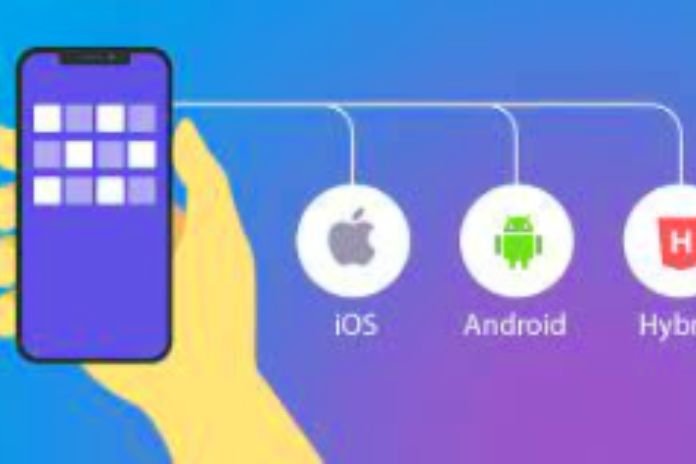Hybrid application: Understand What It Is

Hybrid Application: Do you know what kind of app is best for your business? An app can be native, PWA, or hybrid. To succeed in the mobile world, you must consider each business’s technical and strategic side.
In this article, we will focus on one of these options, the hybrid application — a solution adopted by large companies, such as Facebook and Evernote, that draws attention to bringing advantages to web languages and native apps. Come on? Good reading!
What Is A Hybrid Application?
The hybrid app is developed in web languages. Still, it presents itself and behaves like a native app — which uses a specific vocabulary, working as a union between the two models and being even installed in app stores (such as the App Store and Play Store).
These characteristics make it be created more quickly and economically while satisfying the end user.
How Does Hybrid Apps Work?
It works similarly to a web application because it is developed with this language, such as HTML5, CSS, and JavaScript. However, as you can imagine, only languages and web tools are not enough to make the software work on a mobile system.
This is where frameworks for hybrid app development come in, such as Ionic and Phone Gap, which have a native code for the system (or systems, according to the settings chosen by the developer) that allows installing the web code and making it work correctly on mobile.
In this way, the browser, plugins, and other features of web applications are on the back end; that is, the end user does not see them. Internally, there is a hybrid part (web + native language), but the layout is the same as the native app.
Another operating feature is that the hybrid application is not limited to internal libraries or cell phone functions but is accessed via the web. It is common to see integrations between websites and hybrid apps, such as Instagram, which is accessed through the browser and the app.
What Are The Advantages Of The Hybrid Application?
Now that you understand what a hybrid app is and how it works, it’s time to know its benefits. See what they are next.
Agile Development
Building a hybrid application is more practical and faster. Only one part of the code needs to be written by the developers, and the other part comes from the framework development kit.
In addition, they are developed in languages that are already familiar to more experienced programmers. Therefore, hiring is faster and cheaper than the labor needed for native apps, for example.
With less time invested in the development of the platform, there is more energy and hours of work to improve and optimize the user experience.
Cross-Platform
A native app needs to be developed in specific languages for each system. Thus, if it wants to reach a more significant number of people, the company needs to create a version for Android and another for iOS – which demands more time, money, and specialized labor. With the help of the framework, the team of developers quickly configures the hybrid project to be applied to Android, iOS, or both systems.
Economy
We understand that technology expenditures are investments. After all, they bring several positive returns to the business. However, this does not mean that saving resources during development is not welcome.
As we have seen, hybrid apps use the same source code for Android and iOS systems. This is great because it allows companies to reach people without paying to develop a platform-specific solution. In this way, savings of at least 50% are guaranteed.
Easy Maintenance
Making an improvement or bug fix to a native application involves developing two codebases for each platform. As this is unified in the hybrid software, the development team only has to worry about making changes to a source code, and users of all platforms will benefit.
Not to mention that updates are instantaneous. Thus, the user does not need to reinstall to have the latest version of the app, and the developer does not need to go to stores to upload these versions. Much simpler!
What Are The Most Used Hybrid Apps?
In the beginning, hybrid apps were much lower quality than native ones. The technology was still experimentation; developers could only simulate an application, inserting a website inside a native cell phone class.
This made the user experience unsatisfactory. You couldn’t do almost anything that was done in a native app. Nowadays, technology has advanced a lot, and thanks to frameworks and other technological innovations, it is possible to build unique custom software in a hybrid way.
This more democratic, faster, and cheaper way to build on mobile is a trend worldwide. It is very likely that you use or have already used an app with this technology. Does he doubt it? So, here are some of the most used hybrid apps in the world!
Netflix
Anyone who wants to watch Netflix series and movies on their cell phone can install the company’s app on their Android or iOS phone. The application is a hybrid and receives praise for its navigability, functionality, and video/sound quality.
Evernote
Evernote is a personal organization app with an intuitive design and excellent performance, being on the list of the most used hybrid apps in the world. With more than 1.5 million downloads on Google Play, the solution also has a rating of 4.4 (out of 5) on the App Store.
Did you know that in 2020, Facebook was the app with the highest monthly active users and the second most downloaded worldwide? The app was built in a hybrid way, a great example of how this technology evolved.
Amazon App Store
Amazon, well known for cloud computing, also has an app store for Android and Fire OS. The Amazon App Store was developed with hybrid technology and is one of the few quality alternatives to Google Play.
